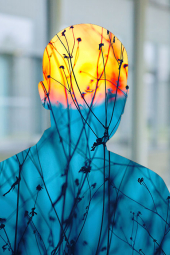Visiting hours
Mon–Sun 8.00–20.00 By prior agreement.
The department of intensive care of follow-up clinic is situated at Hiiu 44, on the second floor. The intensive care department has 8 beds which guarantee the monitoring of patient's all vital indicators and artificial ventilation of lungs. In addition to physicians, nurses and caregivers, each patient is individually treated by physiotherapist.
Intensive care is meant for patients who are in a serious, critical or life-threatening condition or need continuous monitoring to guarantee, maintain and guide vital functions. If required, all necessary tests are performed in order to understand the condition of patient and treat him/her better. The need for intensive care will emerge as a result of one or several failures of organ system.
The most common reason for intensive care is respiratory failure, which requires short-term or long-term mechanical ventilation of lungs. Also persons with disorders of consciousness are quite common among the patients, mainly due to a disease or brain trauma. Patient of intensive care department has been admitted according to a schedule (after extensive surgeries) or for symptomatic care. The time spent in treatment and recovery depends on the illness and condition of the patient.
Also special equipment, which at first glance may seem intimidating and complicated, has an important role in the work organization of intensive care department. All these machines support normal functions of patient and allow monitoring the condition of patient. The department has a bathroom which can also be used by shut-in patients by using the bath frame.
The appearance of intensive care unit patient is significantly different from the ordinary. Patient is surrounded by special equipment and has several catheters, tubes and cannulas inserted into him/her; these are necessary for intensive care and guarantee functioning of organs. Previous illnesses, traumas or surgeries may also cause oedemas and haematoma. Intensive care patient is undressed and covered with a sheet, blanket or electric blanket.
Some patients are not able to eat themselves, but there are many ways to feed them. The most common method is tube-feeding or feeding through nasogastric tube. Nasogastric tube is a thin tube which is inserted to the stomach mostly through the nose. The tube is used to administer food which contains all necessary fats, proteins, vitamins and minerals – everything that is inside the normal healthy food.
Irrespective of the condition of patient, the employees of intensive care department facilitate his/her recovery in every way; they support, help and do everything possible to minimize discomfort of patient.
Information about the condition of patient is available upon a phone call from the attending physician. We recommend agreeing visiting times with the doctor.



